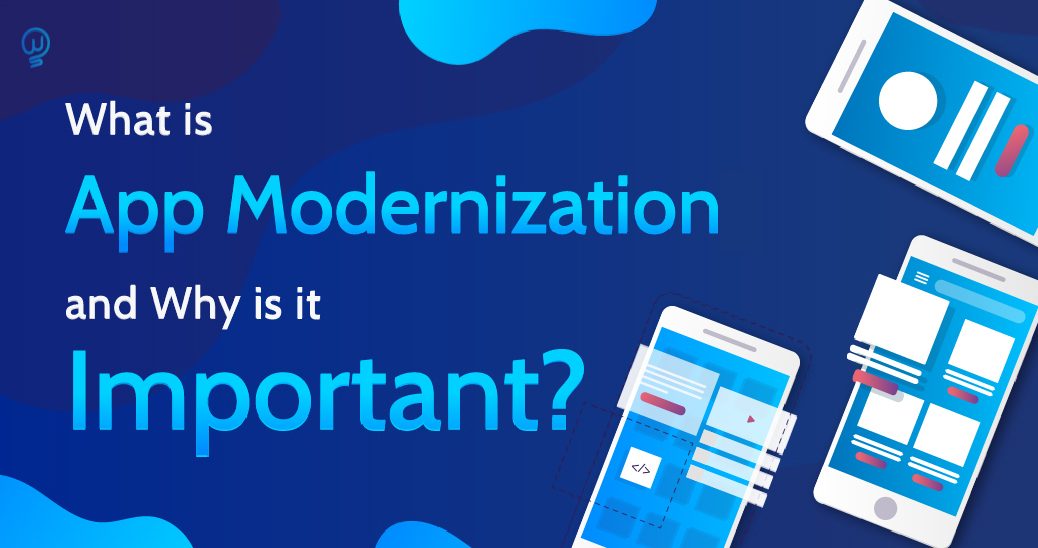
What is Application Modernization, and Why is it Important?
Let us stop beating around the bush! Despite the spike in the number of business solutions and technology solutions providers, almost 31% of the organizations still use legacy systems. On top of this, only 33% of the organizations seem to work with modern infrastructure!
This number is the primary reason why there is an overall decrease in productivity or efficiency in the IT environment. As much as 80% of the organizations around the globe believe that their dependency on legacy systems will affect their long-term growth.
Such stakes create the perfect environment for businesses to modernize their legacy systems and equip themselves for the upcoming market trends and demands.
One of the main reasons why organizations couldn’t take measures to reinvent their applications is that their old system lacks the space for innovation and development. Old systems are designed and created to meet the market demands of that particular time and are not equipped to keep up with the present amplified market.
Even if the legacy systems work in the present climate, it is important to note that modern systems will outperform the existing system in terms of efficiency and resource management. And, given the present scenario, resource management is the key to building a successful organization or enterprise or business or a startup!
Hence the urgent need for application modernization services.

What is Application Modernization?
Application modernization is to adopt a fresh perspective on the existing legacy systems to stay efficient and relevant in the market. this can be done by either updating the existing system or by completely replacing the older ones with a new system.
Organizations should consult Enterprise App development companies to improve their flexibility and agility in their work process.
Application modernization can save a ton of costs in many large organizations. A report suggests that “replacing legacy systems could up the annual income by nearly 14%. For most large organizations, this number is equal to almost $1 billion”.
Hand-picked Related Content: Enterprise Digital Transformation: A path to move business one step ahead
What are the most common types of application modernization?
There are 4 types of application modernization.
- Rehosting
- Refactoring
- Re-platforming
- Replacing
The method which your organization needs to adopt depends on your organization’s level of dependency over the existing system and also the market trends and demands. Once these are determined, a suitable strategy is formed accordingly.

Rehosting
For many organizations that are just starting their modernization process, the “lift and shift” or rehosting method is the most preferable one. This is mainly because of the fact that it preserves the operations without any complex changes to codes or functions. The data is simply migrated to a public cloud infrastructure for a smoother operation.
Refactoring
Unlike the “lift and shift” method, application refactoring involves changing the codes involved in the operation. Tweaks are done on the functionality side of the application. either the performance is upgraded or new features are included to keep up with the market flow. To understand the existing code environment and upgrade it, the app development company should have a thorough understanding across different technologies, including the retro ones!
Hand-Picked Related Content – The war of Mobile App Rewriting and Refactoring to modernize legacy apps!
Re-platforming
Think of re-platforming like this- almost zero changes on the code but leveraging the cloud to its maximum. The application’s code is not subjected to heavy changes, but it is transferred to an environment that can help make the whole operation more effective than it was before. Cloud migration creates better options for enterprises that want to come out of the rigid system, as cloud is all about simplification.
Replacing
This choice depends upon the organization’s tendency to depend upon their legacy systems for their core operations. When a legacy system is so outdated that it interferes with the core functions of the organization and it costs more to rebuild than replace the application. Replacing the application means decommissioning the existing one. If the numbers tally up, it is better to start from scratch as it provides more space to include the latest functions.
Benefits of Application Modernization
One of the main reasons why organizations are looking for application modernization is because of the fact that it lets them simplify their existing system and also allows them to scale up efficiently.
Other than these two obvious reasons, the following are some of the most important benefits of application modernization.
- Keeping up with the competition.
- Compatibility
- Leveraging the cloud tech
- Increased efficiency
- Increased security
- Better user satisfaction
- Staying future-proof

Keeping up with the competition
The market is constantly evolving and the number of options for customers is much higher than it used to be. This competition is forcing organizations to stay in their best shape to keep their operations running, and shifting from legacy systems to modern infrastructure is a part of it!
Compatibility
The market is constantly evolving and new technologies pop up in the market very often. To stay relevant in the market or to future-proof your operations, it is important to keep up with the market trends and adopt the latest technologies to make it work.
Leveraging the cloud tech
Cloud is the present and also the future of enterprise operations. Almost every business, irrespective of the domain they are in, has some level of IT infrastructure to help with their operations. And, the cloud is your best to keep these IT operations running without burning up too much of your resources.

Increased efficiency
The maintenance cost alone, for the legacy systems, will be higher and as the systems go obsolete, it will be relatively harder to find service providers who can tend to these systems. Also, it is easier to fix bugs and include any new changes in modern applications than legacy systems.
Increased security
Cybersecurity is one of the most important things at this present age, and it is easier to penetrate a defenseless legacy system than a modern application. Recent research found that almost 87% of the key executives in the IT industry think that legacy system is highly vulnerable to cyberattacks and threats.
Staying future proof
One of the main reasons why you should jump ship from legacy systems to modern infrastructure is mainly because to stay relevant in the future. the market is being raided by new technologies every day and it is important that enterprises, industries make space for these new technologies within their operations.
Wrapping this up,
One of the biggest challenges that businesses face while switching from a legacy system to modern infrastructure is that their fear of the unknown. They are less familiar with the new technologies and also, the old ones seem to manage to survive- these are the two main reasons as to why businesses are not converting to modern infrastructure. Many Digital Transformation Solution Providers are framing the right strategies & supporting enterprises to deliver a robust modern application. Henceforth, It is better to incorporate small changes along the way than to adapt over a night!
